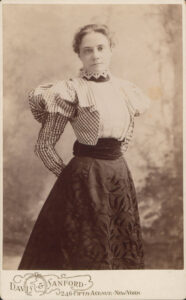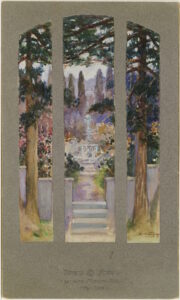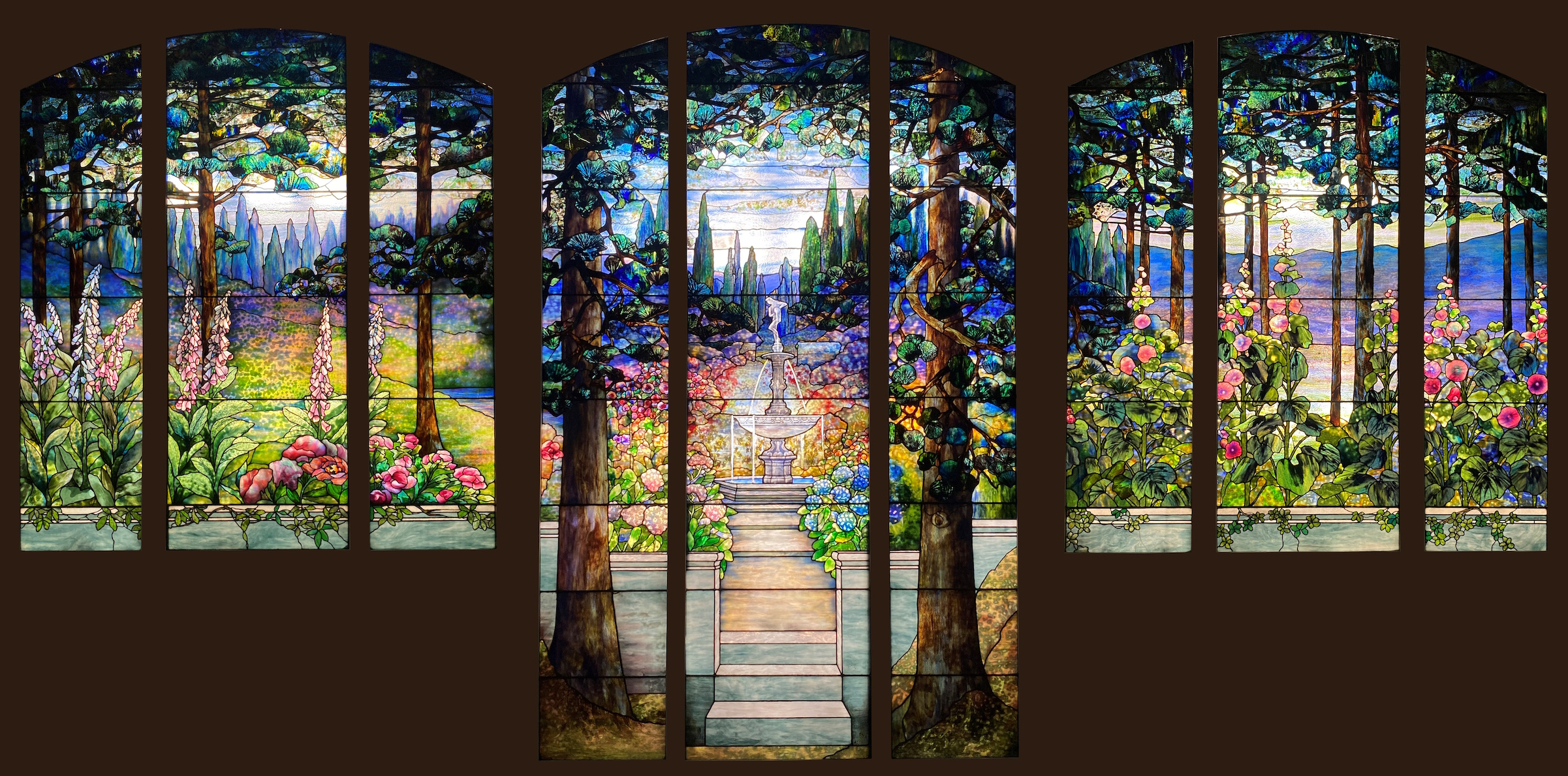A spectacular three-part window created by Louis Comfort Tiffany’s renowned glass studio and designed by Agnes Northrop has been acquired by the Metropolitan Museum of Art. The monumental windows adorned the Great Hall of Linden Hall, the stately home of in Dawson, Pennsylvania, before they were sold and disappeared into a private collection in 2005. Now they will return to public view.
As part of the Museum’s American Wing 100th anniversary, the window will be installed in the Charles Engelhard Court beginning November 2024. The window will be dramatically framed by the columns from Laurelton Hall, Tiffany’s Long Island country estate.
The window was commissioned by Sarah Cochran, a former housemaid who married Philip Cochran, the son and sole heir to a coal fortune, and thus became lady of the estate she had once cleaned. She was widowed young and their son died while still in college, so she took on management of the family’s complex business interests, earning her the sobriquet “Coal Queen.” At the same time, she traveled around Europe seeking inspiration, furnishings and antiques for the new home she was having built back in Pennsylvania.
 Construction of Linden Hall began in 1911. Sarah commissioned Louis Comfort Tiffany to create the stained glass windows for the great hall in 1912. Agnes Northrop, one of Tiffany’s most prominent female designers who started in the 1880s as one the “Tiffany Girls,” the group of women who created some of the glassworks’ most iconic designs for windows, lamps and other decorative pieces that have gone down in history as the signature Tiffany style.
Construction of Linden Hall began in 1911. Sarah commissioned Louis Comfort Tiffany to create the stained glass windows for the great hall in 1912. Agnes Northrop, one of Tiffany’s most prominent female designers who started in the 1880s as one the “Tiffany Girls,” the group of women who created some of the glassworks’ most iconic designs for windows, lamps and other decorative pieces that have gone down in history as the signature Tiffany style.
Northrop was the head of the design crew for a short time, before graduating to working on solo projects in her own office. She pioneered the stained-glass landscape windows of iridescent glass, designed them first in gouache watercolor and pencil, before the glass was created from her designs at the Louis Comfort Tiffany studio in New York. Northrop’s gouache of the central window for the Linden Hall commission is already in the collection of the Met and has been since 1967.
 The finished window was so spectacular that Louis Comfort Tiffany briefly put it on display in his Manhattan showroom at 37th Street and Fifth Avenue before it was installed at Linden Hall. The lush flowers, tree-lined arbor, formal garden with central fountain and mountain pine forests on the horizon were designed to mimic Linden’s actual gardens. Light and colored flooded into the Great Hall through the northern exposure windows.
The finished window was so spectacular that Louis Comfort Tiffany briefly put it on display in his Manhattan showroom at 37th Street and Fifth Avenue before it was installed at Linden Hall. The lush flowers, tree-lined arbor, formal garden with central fountain and mountain pine forests on the horizon were designed to mimic Linden’s actual gardens. Light and colored flooded into the Great Hall through the northern exposure windows.
Sarah Cochran died in 1936, bequeathing Linden to her brother. It passed through several hands over the next few decades, include an order of monks, before the current owners, the United Steelworkers Union, bought the estate in 1976. In 2005, the USU sold the windows to a private buyer for $6.8 million, replacing them with simple clear panes decorated with a heraldry crest in the middle of each panel. The union explained this seemingly inexplicable decision as unfortunate but necessary as the astronomical costs of insuring the Tiffany windows became increasingly unaffordable.
For nearly two decades the Linden Hall Garden Landscape was out of view. Earlier this year, funds from a variety of donors made it possible for the Garden Landscape to be brought back into the light for all to see two miles south of where it had once graced the Tiffany Studios showroom.
Max Hollein, The Met’s Marina Kellen French Director and CEO, said: “This stunning work of art is an extraordinary example of the transformational creativity of Agnes Northrop and Tiffany Studios. Magnificent in concept and execution and more than grand in size, it deepens the American Wing’s Tiffany holdings and will enhance the already stunning Engelhard Court with a powerful, immersive viewing experience.”

As a former steel worker, I visited the estate a number of times. The Union built a hotel with classrooms on the grounds to educate members who were interested in learning the ins and outs of union work-it was a nice place to get a little education. The staff would hold a banquet at the end of each week’s course in the old mansion.
Many members felt the estate was a White Elephant, we could well rent space in an office building for a small percentage of the cost of keeping up the estate; a little luxury never hurt any working person. Money well spent, I thought.
More Tiffany large-scale works:
https://www.visitpa.com/article/stunning-stained-glass-follow-tiffany-glass-trail-pa
Happy new year, LD!
How big is this? Nowhere in the article does it give the window’s dimensions, and there is no scale to the photo.
I actually said, out loud, to no one, Whoa F*** when I saw that window.